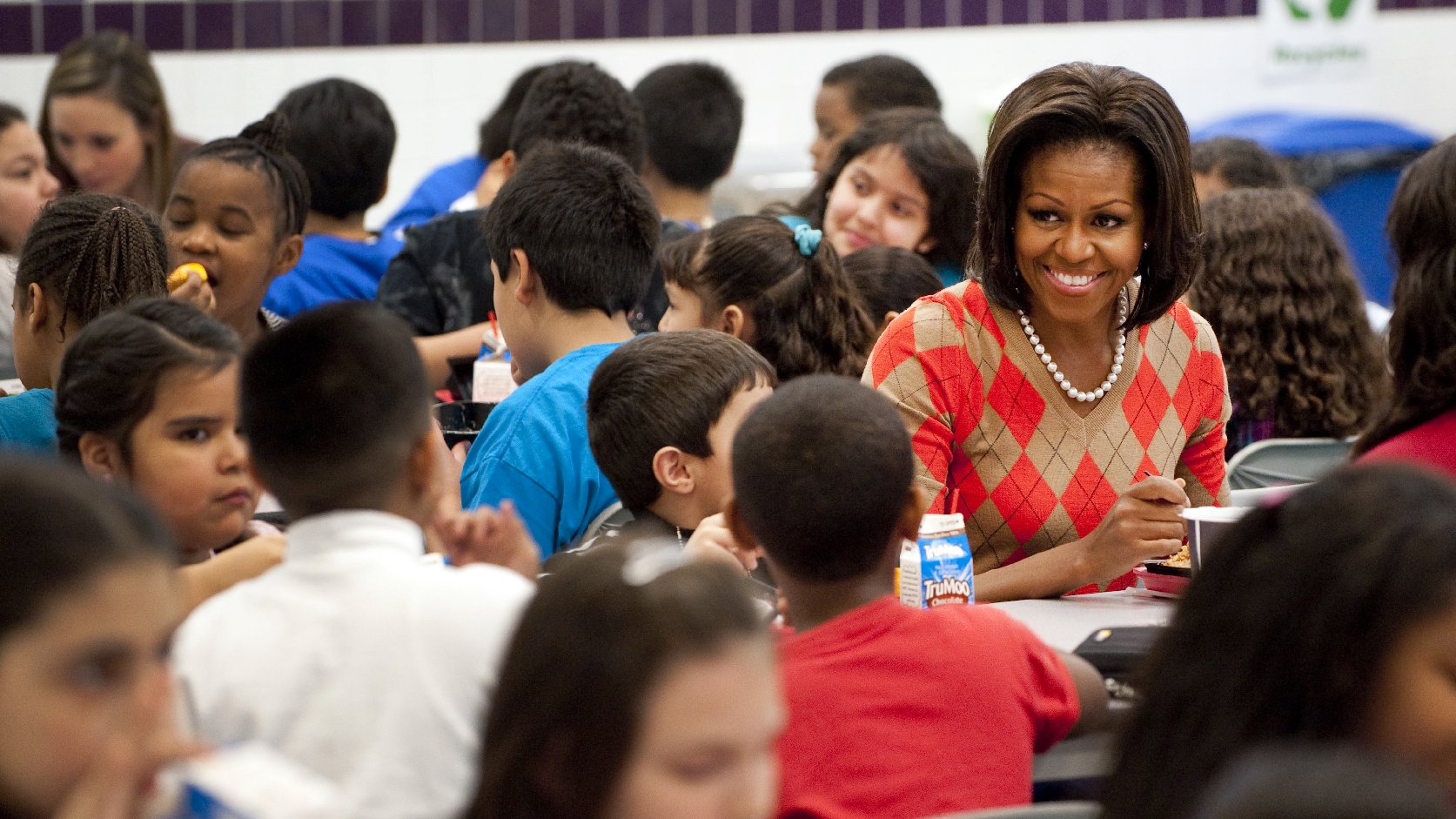And that messaging is everywhere: Food and beverage companies spent $149 million to market their products in schools in 2009, according to the Federal Trade Commission. Advertising for sodas and other sugary drinks accounted for more than 90 percent of this spending, followed by fast food.
Beverage companies used to sell a lot of sodas in schools. Nowadays, their vending machines are selling juice and water instead. Even so, critics note, the same companies are still selling directly to kids.
Meanwhile, nearly two-thirds of elementary-school kids receive coupons for fast food at school through programs such as Pizza Hut's Book It! Program, which uses pizza as a reading incentive, according to a study published last month in JAMA Pediatrics.
The proposed rules would limit such exposure by allowing only ads and marketing in schools for foods that meet the Smart Snacks in Schools nutrition guidelines. Those standards, which are set to go in effect in the 2014-2015 school year, stem from the 2010 Healthy Hunger-Free Kids Act. They aim to boost the healthfulness of foods sold through vending machines, snack bars and a la carte in cafeterias.
Under the stricter guidelines, vending machines branded with Coke or Pepsi images would no longer be allowed in schools. Same goes for branding for sugary drinks and snacks on posters and cups.
The snack rules set limits for how much fat, sugar and sodium snacks can contain. But they only apply during the school day. So foods sold at after-school games, for instance, would be exempt.
Tuesday's announcement comes as the first lady's Let's Move! Initiative to combat childhood obesity marks its fourth anniversary this month. Advocates for limiting food marketing to kids hailed the announcement as an important step forward.
"Given the high rates of childhood obesity and children's poor diets, it doesn't make sense to advertise and market unhealthy food to children at all, much less in schools," Margo Wootan, nutrition policy director for the Center for Science in the Public Interest, said in a statement. "Parents know from experience, and studies show, that food marketing affects kids' food preferences, food choices and health."
Others applauded the new guidelines but worried that they didn't go far enough.
For instance, the new rules wouldn't ban charity events linked to fast food chains such as McCare nights — fundraisers in which students and their parents are encouraged to eat at their local McDonald's. The franchise then donates a portion of sales to the school.
"We'd love to see the Let's Move! campaign take on this predatory marketing to kids that happens across the board," says Sriram Madhusoodanan, a senior organizer with Corporate Accountability International, a watchdog group that has been calling on McDonald's to stop such marketing to kids.
Indeed, it's still unclear just how the guidelines, which have yet to be finalized, will be applied. In part, that's because schools will be given leeway to decide for themselves what constitutes unacceptable marketing.
And the Associated Press reports that the rules will make some exemptions for big infrastructure costs:
"That scoreboard advertising Coca-Cola, for example, wouldn't have to be immediately torn down. But the school would have to get one with a healthier message the next time it was replaced."
Also announced Tuesday: An expansion of efforts to feed hungry kids through school. Starting on July 1, more than 22,000 schools nationwide serving mostly low-income kids will be allowed to serve all students free breakfasts.
"Right now, millions of children in this country are showing up to school hungry every day," the first lady said.
As we recently reported, more than 21 million schoolchildren ate free or reduced-priced lunches last year. Under the expanded program, an additional 9 million kids will be eligible to receive the free meals, Obama says.
Copyright 2014 NPR.
